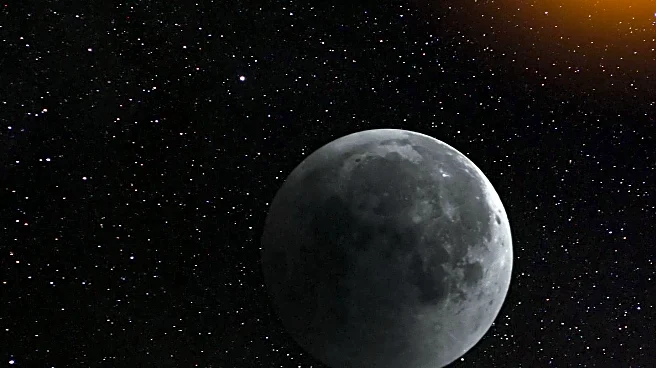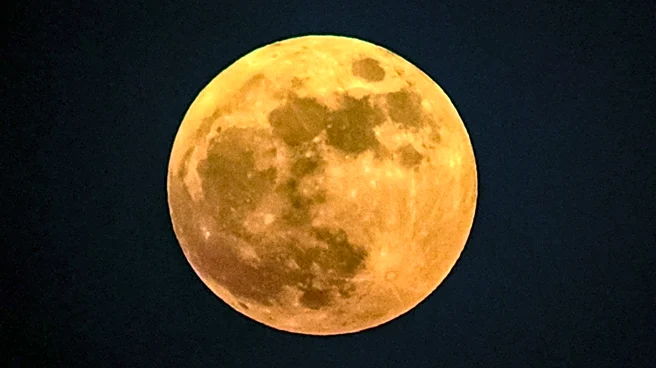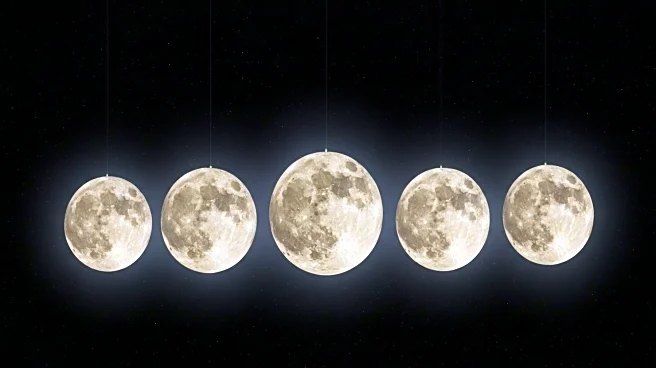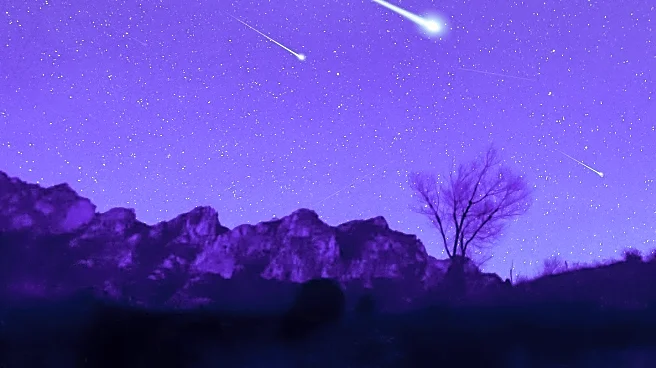What is the story about?
What's Happening?
In the coming months, astronomy enthusiasts will have the opportunity to witness four consecutive supermoons, starting with the Hunter's moon in October. These supermoons occur when the moon is at its closest point to Earth, making it appear larger and brighter than usual. The sequence includes the Beaver moon in November, the Cold moon in December, and the Wolf moon in January. The best viewing times are when the moon is rising or setting, as it appears larger near the horizon. The first supermoon will be visible on October 7, followed by a waning moon that will still be more than 75% illuminated by October 10, appearing next to the Pleiades star cluster.
Why It's Important?
The occurrence of four consecutive supermoons presents a unique opportunity for skywatchers and astronomy enthusiasts to observe the moon in greater detail. Supermoons are known for their increased brightness and size, which can enhance public interest in astronomy and celestial events. This series of supermoons may also inspire educational activities and community events centered around astronomy, potentially increasing public engagement with science and nature. Additionally, the visibility of celestial objects like the Pleiades and Jupiter during this period can provide educational opportunities for amateur astronomers and students.
What's Next?
As the supermoon series progresses, enthusiasts can look forward to observing the moon's interactions with other celestial bodies, such as the Pleiades and Jupiter. The next supermoon will occur in early November, continuing the sequence of enhanced lunar visibility. Astronomy clubs and educational institutions may organize viewing events and workshops to capitalize on public interest. The series of supermoons may also lead to increased media coverage and public discussions about lunar phenomena and their significance.
Beyond the Headlines
The supermoon series highlights the importance of celestial events in fostering public interest in science and astronomy. It underscores the role of natural phenomena in promoting educational outreach and community engagement. The visibility of the moon alongside other celestial objects can deepen public understanding of the night sky and encourage further exploration of astronomy as a hobby or field of study.
AI Generated Content
Do you find this article useful?













